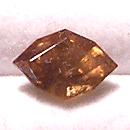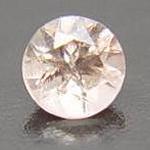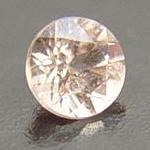|
|
||||||||||||||||
|
||||||||||||||||
|
||||||
|
|
|
|
Childrenite
|
|
| | |
| Discovered in 1823; IMA status: Valid (pre-IMA; Grandfathered) | ||
|
| ||
|
Chemistry |
|
|
| |
|
Fe2+Al(PO4)(OH)2 • H2O | |
|
|
Hydrated Iron Aluminum Phosphate Hydroxide |
|
Molecular Weight: |
229.83 gm |
|
Composition: |
Aluminum |
11.74 % |
Al |
22.18 % |
Al2O3 |
|
|
Iron |
24.30 % |
Fe |
31.26 % |
FeO |
|
|
Phosphorus |
13.48 % |
P |
30.88 % |
P2O5 |
|
|
Hydrogen |
1.75 % |
H |
15.68 % |
H2O |
|
|
Oxygen |
48.73 % |
O |
|
|
|
|
|
100.00 % |
|
100.00 % |
= TOTAL OXIDE |
|
|
|
||||
|
Classification |
|
|
| |
|
Phosphates | |
|
7/D.14-10 | |
|
|
8 : PHOSPHATES, ARSENATES, VANADATES
|
|
Related to: |
Childrenite-Eosphorite Series. The Fe2+ analogue of Eosphorite. |
|
Varieties: |
None |
|
Synonyms: |
None |
|
|
|
|
Crystal Data |
|
|
|
|
|
As equant to pyramidal crystals, may be short prismatic along {001}, thick tabular on {010}, or platy on {100}, commonly doubly terminated, to 2 cm; in radiating groups and fibrous crusts; massive. |
|
|
May show twinning on {100} and {001}, observed optically, to give pseudo-orthorhombic symmetry; may be due to oxidation. |
|
|
|
|
|
Physical Properties |
|
|
|
|
|
Imperfect, Poor on {100} |
|
|
Conchoidal to Uneven |
|
|
Brittle |
|
|
4.5 - 5.0 |
|
|
3.18 - 3.25 (g/cm3) |
|
|
None |
|
|
Not Radioactive |
|
|
|
|
|
Optical Properties |
|
|
|
|
|
White, Yellowish brown, Brownish black |
|
|
Transparent to Translucent |
|
|
Vitreous to Resinous |
|
|
1.649 - 1.691 Biaxial ( - ) |
|
|
0.0270 - 0.0420 |
|
|
Strong; r > v |
|
|
X = yellow; Y = pink; Z = pale pink to colorless. |
|
|
|
|
|
Occurances |
|
|
|
|
|
Geological Setting: |
In some complex granite pegmatites, typically a low-temperature hydrothermal alteration product of primary phosphate minerals. |
|
Common Associations: |
Siderite, Pyrite, Apatite, Quartz (Tavistock, England); Zinnwaldite, Tourmaline, Akaolinite (Greifensteine, Germany) |
|
Common Impurities: |
Ca, Mn |
|
Type Locality: |
Tavistock District, Devon, England, UK |
|
Year Discovered: |
1832 |
|
View mineral photos: | |
|
|
|
|
More Information |
|
|
|
|
|
| |
|
|
|
|
(gem
photograph above courtesy of Jay Medici) |
|
|
|||||||||||||||||||||||||||


